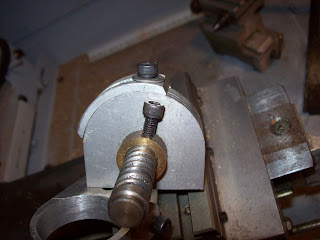I have need for an electronics tool and experimentation kit which is self contained. I looked around on the internet for some ideas, but failed to find anything which suited my needs, or seemed practical for my planned budget.
The military used to use field desks (you occasionally see one in the old episodes of M*A*S*H if you want to see an example of a real one) and I thought that would make a good starting point for a design.
I googled (is that a real word yet?) "field desk plans" and found some dimensions from early American history re-enactors and museums. Most centered on dimensions of 24"W x 18"H x 10"D (nominally 600mmW x 450mmH x 250mmD) and that seemed like a reasonable size for my intended purposes.
Whilst planning the cutting for the timber I had, I decided to use an external depth of 12" (nominally 300mm) instead of the original 10" mentioned previously due to the depth of the plastic containers I am planning to use.
My timber was the remains of a UPS packing crate which I salvaged from a job about 2-3 years ago. The timber from the sides of the crate was 6mm (1/4") plywood, and the side which doubled as a ramp was 10mm (3/8") plywood. I drew up some plans and cutting lists using the 10mm ply for the top, bottom, riser, back and sides. I planned on using 6mm ply for the shelves, and some 12mm (1/2") plywood for the front. Due to a cutting error I ended up having to use some of the 12mm ply for the sides as well.
 |
| Figure 1 - Raw plywood material |
 | |
| Figure 2 - Cut into basic panels |
After marking the timber to the largest finished dimension for each panel, I cut the panels out using a circular saw.
The rough panels were then marked up with the slots, dovetails, etc which were cut in using a jigsaw, hacksaw, and portable drill (the drill was used to start the slots for the finger joints. All external joints were made as dovetail joints to help the box stay together, whilst the internal joints (supporting the shelves) were made as finger joints (tab and slot).
 |
| Figure 3 - partially assembled carcass |
During the construction I would clip the unit together to mark up the next panel - for some reason I got confuzzled at the end of the first day and assembled the desk with one piece reversed. This then meant the finished carcass went together upside down, and mirrored. Thankfully the photos I'd taken earlier in the day were able to be used to show me the correct orientation of the pieces, and allowed me to assemble it correctly the following day. Being right-handed, I really wanted the section for power to be on the RHS.
 |
| Figure 4 - Carcass assembled, but with pieces mirrored by accident - rear view |
 |
| Figure 5 - Back panel marked up and cut for dovetails and finger joints. |
Once happy with the finished carcass, I dismantled it and sanded all panels before assembling with construction adhesive (aka "Liquid nails") and PVA glue.
 |
| Figure 6 - Back panel in place on carcass of field desk, shelves not in place. |
The front door was then cut and tested for fit. I found a slight bow in the LHS side panel - I'm still trying to determine if I can remove it,or if I will need to alter the door slightly to compensate. UPDATE - I modified the door slightly by allowing a slight amount of slack in the hinges, and put a heavy chamfer on the inner edges of the door, this allows the door to close and adjust it's centre based on the 1-2mm bow in the LHS panel.
 |
| Figure 7 - Field desk with shelves filled with sample material |
Whilst the glue dried, I commenced work on building the hardware... hinges, catches, etc.
Next articles will include:
Hardware - hinges, catches, etc
Electrical - Lighting, PSU, etc
Finishing - Painting, trim, etc
Since I didn't get much done last week on the desk, I'm hoping to complete it over the next two weeks or so.










































